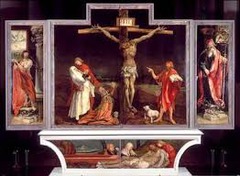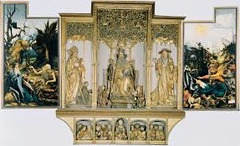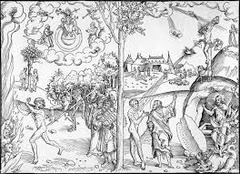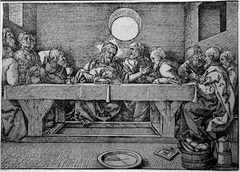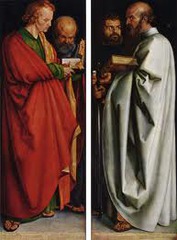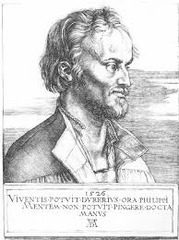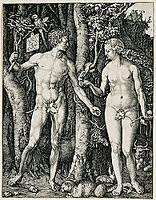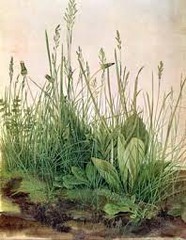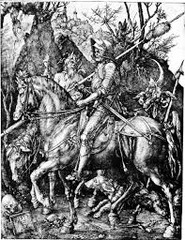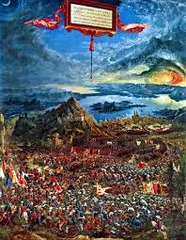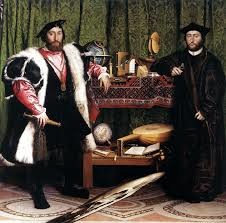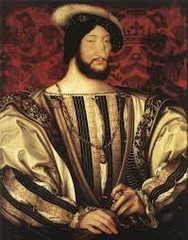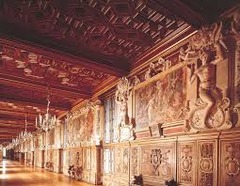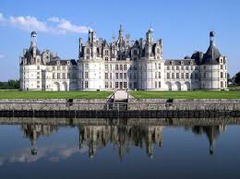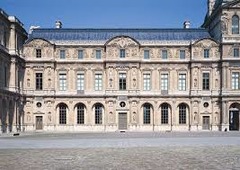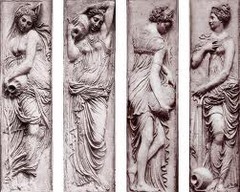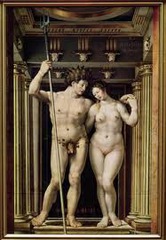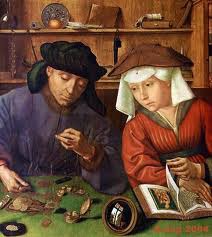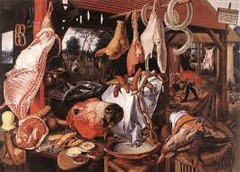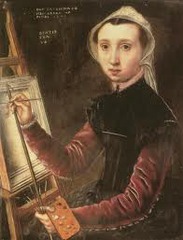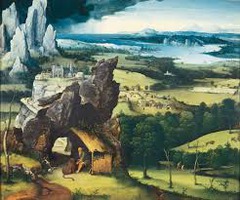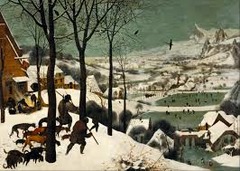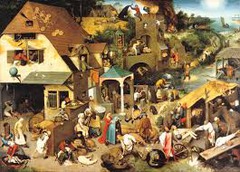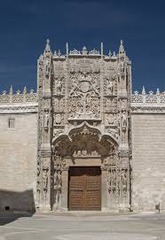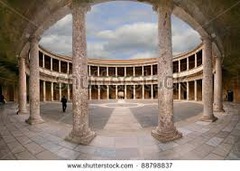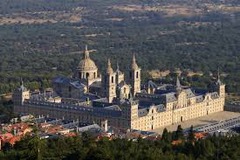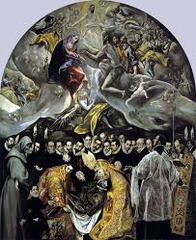*Isenheim Altarpiece (closed)*
*Matthias Grunewald*
Isenheim, Germany
1510-1515
Oil on panel
16th Century Northern European
Suffering Christ. St. Sebastian on left pierced by arrows. Lamb holding cross bleeding into a cup. Predella with lamentation. When slid open, it looks like Christ was amputated because of gangrene. Images of healing and suffering.
*Isenheim Altarpiece (open)*
*Matthias Grunewald*
Isenheim, Germany
1510-1515
Oil on panel
16th Century Northern European
St. Anthony on left with St. Paul sitting with medicinal plant. On right, tortured by 5 temptations. Guy covered in boils has ergotism. Message of salvation and hope. Christ and disciples on bottom. St. Jerome, Augustine, Anthony in middle.
*Allegory of Law and Grace*
*Lucas Cranach*
1530
Woodcut
16th Century Northern European
Judgement on left. Skeleton poking a Catholic into hell. Moses with ten commandments. Right shows sinner being forgiven with the Grace of God shining down.
*Last Supper*
*Albrecht Dürer*
1523
Woodcut
16th Century Northern European
11 disciples, Judas is gone. Sorrow after betrayal. Bread and wine in corner. Empty plate commemorates Jesus's sacrifice. Signs painting with date. Cross-hatching for darkness.
*Four Apostles*
*Albrecht Dürer*
1526
Oil on panel
16th Century Northern European
On left, John showing Peter the Bible, saying it is more important than the Church. Mark with scroll. Pul sith sword. Peter with Keys to the Kingdom. They represent the 4 humors (Sanguine, phlegmatic, choleric, melancholin).
*Phillipp Melanchthon*
*Albrecht Dürer*
1526
Engraving
16th Century Northern European
Melanchthon is famous for reforming the education system in Germany. Tries to capture character. Refers to his intellect. Theory that eye is a window into the soul.
*The Fall of Man*
*Albrecht Dürer*
1504
Engraving
16th Century Northern European
Genesis. Adam based on Apollo Belvedere. Eve based on Medici Venus. 1504 concept of perfect male and female figures. 4 Humors in cat, elk, ox, rabbit. Cat and mouse tension echoes Adam and Eve tension with snake
*The Great Piece of Turf*
*Albrecht Dürer*
1503
Watercolor
16th Century Northern European
Allegory. So accurate that a botanist can delineate species.
*Knight, Death, and the Devil*
*Albrecht Dürer*
1513
Engraving
16th Century Northern European
Based on Donatello's Gattamelata and Verrochio's Bartolomeo Colleoni. Based on Leonardo's sketches. Followed by his faithful retriever. Christian soldier. Death is old man in back. Horned creature is the Devil. Shows exceptional use of line.
*The Battle of Issus*
*Albrecht Altdorfer*
1529
Oil on panel
16th Century Northern European
Alexander vs Darius I in 333 BC. Comissioned by Wilhelm IV of Bavaria for a comapaign against invading Turks. Aerilal view. Alexander is known as the Sun God. Sun on right. Crescent moon of Islam on left.
*The French Ambassadors*
*Hans Hobein the Younger*
1533
Oil and tempera on panel
16th Century Northern European
Reflects Northern realism. Italian ideas on sculptural form. Moved to England. Two men are Denteville nad Selves. Humanist stuff on tables. Adds elements of memento mori. SKull on Denteville's hat. Anamorphic skull could be symbol of death and redemption or could be Holbein's signature.
*Francis I*
*Jean Clouet*
1525-1530
Oil and tempera on panel
16th Century French
Strange neck. Illusionism becomes secondary.
*Gallery of King Francis I*
*Rosso Fiorentino and Francesco Primaticcio*
Fontainebleau, France
1530-1540
Sculpture and painting
16th Century French
Abrupt changes in scale and texture. Mannerist. Francis's Palace. School of Fontainebleau.
*Chateau de Chambord*
Chambord, France
begun 1519
A chateau is a hunting lodge. Completed under Henry II's reign.
*West facade of the Square Court of the Louvre*
*Pierre Lescot and Jean Goujon*
Paris, France
1546
Paragon of Italian Renaissance architecture in France. 3 stories with engaged pilasters and capitals. Cornice. Steep, triangular roof. Jean Goujon did 3 rounded rectangles, portruding from wall = pavillions. Niches in sculpture are French.
*Nymphs*
*Jean Goujon*
Paris, France
1548-1549
Marble reliefs
16th Century French
Torn off of the Fountain of the Innocents. Near vases of water. Figura serpintinata - Mannerist poses. Reminiscent of Nike adjusting sandals. Greek wet shirt contest.
*Neptune and Amphitrite*
*Jan Gossaert*
1516
Oil on panel
16th Century Dutch
Clearly influenced by Dürer's Fall of Man. Contrapposto. Huge. Egg and dart colums. Bucrania - ox skull decoration. Classical elements in background.
*Money-Changer and His Wife*
*Quinten Massys*
1514
Oil on Panel
16th Century Dutch
Similar to Petrus Christus's The Goldsmith in His Shop. Balancing scales is a reference to St. Michael the Archangel. Wife paging through prayer book. Two old men gossiping suggests the idleness of gossip. Convex mirror shows man looking in prayer book near church.
*Meat Still-Life*
*Pieter Aertsen*
1551
Oil on panel
16th Century Dutch
Momento mori. 2 crossed fish are a symbol of Jesus. Pretzels are eaten during lent. Mary on donkey holding Christ on left. Man on mussel shells which is a symbol of afrodisiac. Man with woman in tavern, probably a prostitute.
*Self-portrait*
*Caterina van Hemessen*
1548
Panel
16th Century Dutch
Holding maul stick to paint. Painting self-portrait. Weird face shape. Pale shitty face.
*Landscape with Saint Jerome*
*Joachim Patinir*
1520-1524
Oil on panel
16th Century Dutch
Good landscape painter. St. Jerome removing thorn. Crucifix and skull. Bluer background, warmer colors in foreground.
*Hunters in the Snow*
*Pieter Bruegel the Elder*
1565
Oil on panel
16th Century Dutch
1 of five existing of six paintings by Bruegel showing seasonal changes. 2 hunters returning with weary dogs.
*Netherlandish Proverbs*
*Pieter Bruegel the Elder*
1559
Oil on panel
16th Century Dutch
Literal illustrations of proverbs. Lots of meanings are lost. Man beats head against wall showing an ambitious idiot. Person defecating on globe. Woman in red putting blue gown on her husband.
*Portal of Colegio de San Gregorio*
Valladoid, Spain
1498
16th Century Spanish
Plateresque Gothic. Huge pomegranate tree in middle is a symbol of Granada. Coat of arms of Ferdinand e Isabella. Ogival arches. Ogee in middle.
*Courtyard of the palace of Charles V, Alhambra*
*Pedro Machuca*
Granada, Spain
1526-1568
16th Century Spanish
Very Classical. Influenced by Tempietto. Doric supporting entablature, Ionic above.
*Escorial*
*Juan de Herrera*
Madrid, Spain
1563-1584
16th Century Spanish
Wanted a more streamlined palace. Mausoleum, monastery, church, palace. 3 entryways, Italian pediments. Grid-like. Massive church in middle. Grid commemorates gridiron where St. Lawrence was martyred.
*The Burial of Count Orgaz*
*El Greco*
Toledo, Spain
1586
Oil on canvas
16th Century Spanish
Dead Orgaz. St. Steven and Augustine burrying him. Picture of martyrdom on robes. El Greco above St. Steven, shows of portraiture, angel taking soul to heaven. Mary to Jesus's left. St. John the Baptist in front of Jesus. Tintoretto influence. Spanis Mannerist-ish.
